“The Earthquake Car”















About the 5:04 PM
On October 17, 1989 at 5:04 PM, the Loma Prieta earthquake struck the San Francisco Bay Area and a brick wall collapsed on the rear half of an Olds Cutlass parked by Clayton and Page streets. Michael Michael saw it there and the creative wheels began to turn. “I bet that will still run”, he mused, and he placed a note on the car offering to buy it.
Within a few days, the car had changed hands, and with the addition of a new paint job and a license plate bearing the exact time of the earthquake, it became a conceptional art piece and a testament to the powerful forces of nature. Michael also enjoyed playing with America’s obsession with automotive perfection as a status symbol. The 5:04 looks like a normal car. It’s simply... the wrong shape.
In 1991, 5:04 was the first “art car” to make an appearance at Burning Man, beginning a trend that has grown to epic proportions. It was mentioned twice in the San Francisco Chronicle by the legendary columnist and observer of all things San Francisco, Herb Caen. It was profiled in the book “Wild Wheels” by Harrod Blank, and, in a clandestine prank, became the last private automobile to drive on San Francisco’s earthquake-damaged Embarcadero Freeway the day before it was demolished. In 2011, It was included in an exhibit at the National Automobile Museum in Reno, NV.
About Michael Michael
An avid futurist with an interest in technology and social communities, M2 has been involved with many San Francisco social, cultural and technology institutions. He was a founding member of the Cacophony Society and also a crew member of the machine performance group; Survival Research Labs. During the 1970′s his Silicon Valley career began in the early days of the personal computer as an electro-mechanical systems engineer for Fairchild Semiconductor. During the early 1980s he was a consultant to Caltrans doing research on intelligent freeway systems in Los Angeles. Branching into automated systems in the mid-1980s, he developed the first robotic assembly line for Apple Computer’s Fremont plant in 1986. In 1988 he was a co-founder of Jasmine Technology, the first technology company to be located within San Francisco. As a content contributor and social catalyst, he was influential to many local startups, including Wired, Laughing Squid, Boing Boing and the Internet Archive.
He was a co-founder of Burning Man in 1988 and initialized much of Burning Man’s progress over the years. Besides instigating the first art car at Burning Man, he founded the Black Rock Rangers, edited the first on-site newspaper, developed the logo design which has become the symbol of the Burning Man community, and launched containerized storage and transport for the event. As an ambassador, he helped kick start the Regional Network by visiting Burning Man communities across the US during his 2001 Tour of America. In 2008, he managed the development of Burning Man’s presence in the virtual world of Second Life. Today, he is a founding member of the non-profit Burning Man Project where he is VP & Director of Advanced Social Systems. He speaks frequently on the history of Burning Man. Within the Burning Man community, he is best known by his playa persona: Danger Ranger.
Michael has contributed printed and written material to the Cacophony Society archives in the San Francisco Main Library, and also to the Burning Man archive in the Bancroft Library in Berkeley. Most recently, he has donated his extensive Burning Man archive to the Nevada Museum of Art’s Center for Art + Environment.





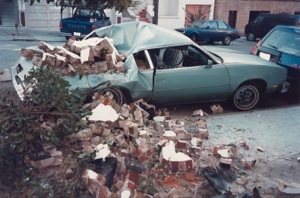

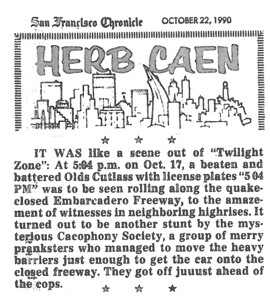
-
•Below: In the National Auto Museum, Reno, NV

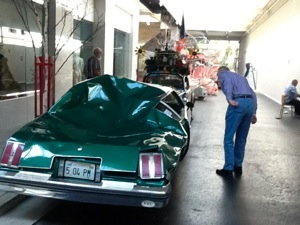

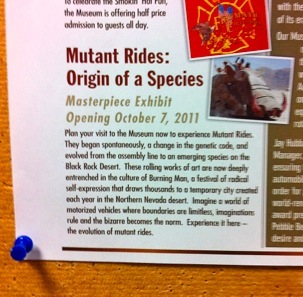

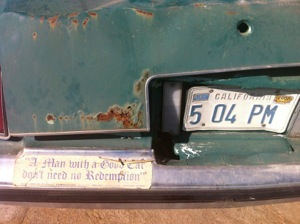
-
•Getting a massage and facelift prior to National Auto Museum debut.



